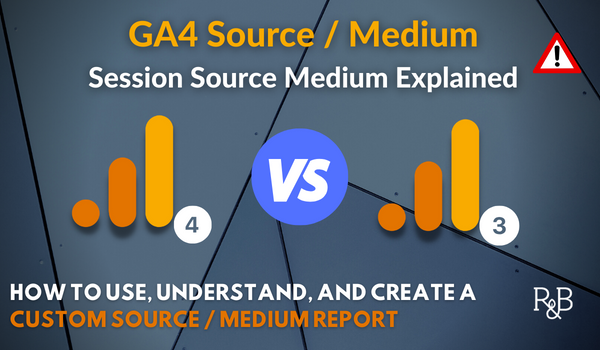Discovering the Concept of Secondary Dimensions in Google Analytics: Definition and Critical Execution
Discovering the Concept of Secondary Dimensions in Google Analytics: Definition and Critical Execution
Blog Article
Unveiling the Impact of Additional Dimension in Google Analytics on Information Analysis and Insights
In the world of data analytics, the utilization of additional dimensions within Google Analytics has actually become a crucial tool for extracting much deeper insights and unraveling facility patterns that may or else stay obscured. By peeling back the layers of main information sets, second dimensions use a nuanced perspective that enriches the understanding of individual habits, website performance, and the effectiveness of marketing approaches. Nevertheless, real impact and untapped possibility of additional measurements are frequently undervalued, eclipsed by the allure of primary metrics. As we browse with the complex landscape of information analysis, the importance of additional dimensions becomes increasingly evident, clarifying important details that hold the key to informed decision-making and strategic optimizations.
Checking Out the Idea of Secondary Measurements
Additional measurements in Google Analytics supply additional understandings by allowing users to evaluate primary data in combination with a secondary attribute. By integrating second measurements, users can dive deeper into the information and reveal important connections that could otherwise go undetected - what is a secondary dimension in google analytics.
By exploring the numerous additional measurements offered in Google Analytics, customers can unlock new understandings and maximize their digital advertising and marketing efforts. In essence, additional measurements offer as an effective tool for boosting information evaluation and driving actionable outcomes.
Enhancing Data Interpretation With Secondary Measurements
Having established the fundamental understanding of second dimensions in Google Analytics and their essential role in information evaluation, the emphasis currently shifts towards leveraging these secondary credit to enhance the analysis of analytics data (what is a secondary dimension in google analytics). By incorporating second measurements into information analysis, analysts can obtain deeper insights into customer habits, website efficiency, and marketing effectiveness

Furthermore, secondary dimensions assist in contextualizing key information metrics by giving added layers of information. This contextualization aids in comprehending the 'why' behind the data fads, assisting experts make informed optimizations and choices to enhance overall performance. Ultimately, incorporating secondary measurements improves the data analysis process, leading to even more strategic actions and meaningful insights.
Revealing Hidden Insights Through Additional Measurements
Checking out the depths of analytics information with additional measurements reveals valuable understandings that would certainly or else remain covered. By incorporating second measurements in Google Analytics, organizations can discover hidden patterns, trends, and connections that provide a more detailed understanding of customer behavior and web site performance. These additional layers of information permit analysts to dive deeper into the key measurements, such as traffic resources or touchdown pages, and obtain a more nuanced point of view on just how various variables communicate with each various other.
Via the use of additional dimensions, experts can sector and More hints contrast data throughout different dimensions, enabling them to identify specific variables that affect individual involvement, conversion prices, and total success metrics. By matching the key dimension of 'gadget category' with the secondary dimension of 'age team,' marketers try this website can identify which age demographics like accessing the internet site with mobile tools versus desktops.
Leveraging Secondary Dimensions for Actionable Analytics
Building upon the understandings unveiled through additional measurements in Google Analytics, services can currently harness this enriched data landscape to drive actionable analytics and critical decision-making. By leveraging additional measurements, companies can delve much deeper right into their data to draw out important patterns, fads, and correlations that may have previously gone undetected. This much deeper level of evaluation enables companies to obtain a much more extensive understanding of customer habits, campaign efficiency, and general internet site performance.
One key advantage of utilizing second dimensions for workable analytics is the capability to sector data based upon details standards. This division allows businesses to customize their campaigns and approaches to different target market teams, resulting in a lot Homepage more targeted and effective advertising initiatives - what is a secondary dimension in google analytics. Furthermore, secondary measurements offer a more alternative view of user communications, enabling services to optimize their internet site material, design, and general customer experience
Maximizing Decision-Making With Second Dimensions
To boost calculated decision-making in analytics, leveraging additional dimensions in Google Analytics can provide a more nuanced viewpoint on user habits and project efficiency. By including secondary measurements right into information evaluation, businesses can dig deeper into the specifics of their website visitors' interactions and engagement patterns. This extra layer of information enables a much more extensive understanding of how different variables, such as demographics, devices, or website traffic sources, effect key efficiency signs.

Verdict
In conclusion, making use of secondary measurements in Google Analytics plays a crucial function in enhancing data evaluation and revealing concealed insights. By exploring this principle, one can gain a deeper understanding of customer actions and make informed choices based on workable analytics. Leveraging additional measurements enables for an extra detailed interpretation of data and takes full advantage of the effectiveness of decision-making procedures.

Report this page